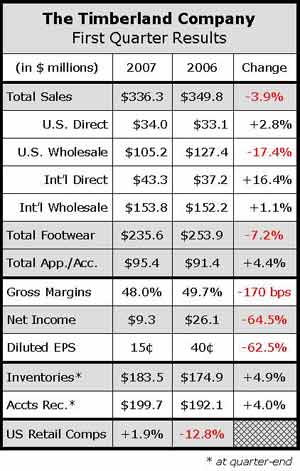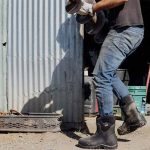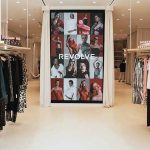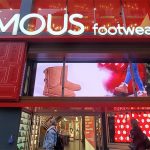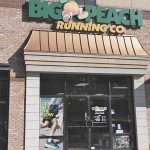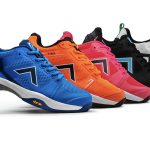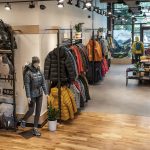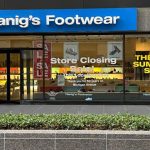With slow sales and eroding margins, Timberland delivered another disappointing quarter with every consumer segment except Timberland PRO showing top-line declines. In currency-neutral terms, sales declined 7% world wide. By product category, footwear revenues declined 7% to $236 million, while apparel and accessories grew 4% to $95 million. The footwear declines were driven by decreases in boots and kids sales as well as modest declines in casual and outdoor products, which offset double-digit gains in Timberland PRO. Apparel and accessory revenue growth reflected double-digit gains in SmartWool and benefits from the addition of the Howies business.
The Timberland management team is working to bring the business up to a 15% operating margin compared to the current 5.9% level – excluding restructuring costs. This low operating margin rate was caused by lower gross margins as a percentage of sales, which in turn were driven by higher markdowns and production costs. In order to hit bottom-line targets, management said they need to “return to top-line growth, improved gross margin performance, and a rationalized operating expense structure.”
Geographically, International sales were up 4% to $197 million due entirely to gains in foreign currency. On a constant dollar basis, International revenues fell 2%, driven by the anticipated declines in boots and kids footwear. In the first quarter, Europe revenues were up 1% – down 7% in constant dollars – driven by pressures on boots and kids sales.
Timberland's U.S. revenues declined 13% in the first quarter to $139 million. U.S. wholesale revenues decreased 17% to $105 million due to declines in boots and kids footwear, as well as moderate declines in casual footwear and apparel. These slow businesses were partially offset by double-digit gains in PRO and “strong growth” from SmartWool. Timberland's U.S. consumer direct business grew 3% in the first quarter to $34 million with a 2% comp store sales gain.
By business segment, Timberlands Authentic Youth division, formerly the Urban business, is seeing continued contraction. In 2006, boot sales declined approximately $100 million and management is expecting another $100 million pull-back this year. TBL has reduced its door count in the Authentic Youth segment by 25% to create scarcity and ensure “top-quality presentation” of the product. At the same time, it is investing in more urban product development to catch up with the changing fashions. Part of this investment was TBLs acquisition of Ipath, which is expected to give the company more four-season business and better exposure to the urban skate market.
Timberlands Casual segment also showed sales declines this quarter due to a “choppy” department store environment and perceived inconsistency in the apparel line following the transfer of the division to Phillips Van Heusen via a licensing agreement. In addition, the Casual direct retail stores were described as “less successful” and management is focusing on smaller 1,200 square foot locations and a footwear first merchandising plan.
In TBLs Outdoor Performance segment, sales declined during the first quarter in spite of double-digit sales increases at SmartWool. However, management said that they are seeing strong gains in sports specialty accounts, opening new doors and improving sell-through.
As part of hitting the 15% operating margin, TBL is reviewing its less profitable businesses and exploring new options. One example given was the casual apparel licensing agreement with Phillips Van Heusen.
When asked which businesses TBL is considering for similar arrangements, Swartz said, “As we look across this portfolio, there is a whole range of ways to look at these. So for example there are new brands that we have either bought or incubated
So there are clearly some businesses within the portfolio called New Business that perform at a lower rate and some at a higher rate. SmartWool is an example of a business that performs at a very high level. GoLite is a business that we just launched in spring; you would expect in its very first season it is not going to be as profitable.”
On the balance sheet, inventory increased due to increased product costs and the addition of Howies and GoLite. Accounts receivable increased due to later wholesale timing and collection challenges.
The slow sales and margin pressures added up to a considerable decline in net income and diluted EPS. Timberland management does not see this pressure abating in Q2. In the second quarter, Timberland is looking at flat sales with margin pressures contributing to a decline in operating profits of $12 million. This will result in a net loss of $18 million to $20 million excluding restructuring charges.
